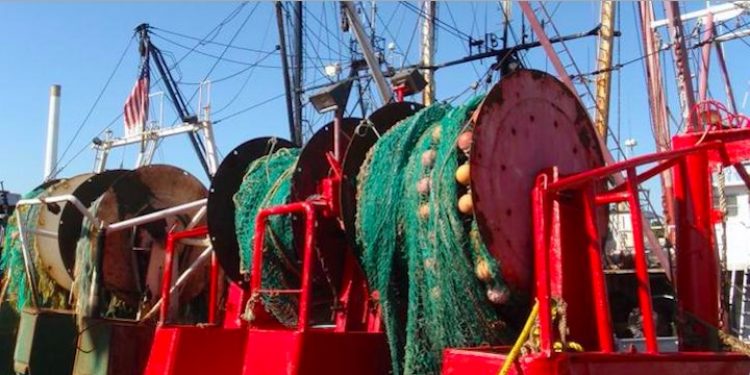The US fishing and seafood sector has generated more than $200 billion in annual sales and supported 1.7 million jobs in recent years, but experienced broad declines in 2020 as a result of the Covid-19 public health crisis, according to a new NOAA Fisheries analysis.
According to analysts, Covid-19 protective measures instituted in March across the United States and around the world contributed to an almost immediate impact on seafood sector sales. There was a strong start to the year, with a 3% increase in commercial fish landings revenue in January and February.
However, revenues declined each month from a 19% decrease in March to a 45% decrease by July. This translates to a 29% decrease across those seven months, as compared to five-year averages and adjusted for inflation.
Restaurant closures, social distancing protocols, and other safety measures also contributed to losses in other sectors of the seafood economy. By the end of second quarter 2020, 78% of aquaculture, aquaponics, and allied businesses reported COVID-19 impacts with 74% experiencing lost sales.
NOAA’s analysis noted outdoor seating at restaurants in warm months and a pivot to direct delivery at some supermarkets provided an outlet for some aquaculture sales. Also, the recreational charter/for-hire fishing industry was completely shut down in the spring with some phased re-openings in the early summer.
‘In the coming months and years, scientists and economists will work to obtain a more complete picture of COVID-19’s impact on US seafood and the Blue Economy. It is our hope that this initial analysis provides a foundation that the industry researchers and planners can draw upon as they plan for the future,’ said NOAA Fisheries Assistant Administrator Chris Oliver.
On the trade front, international markets were negatively affected by disruptions in harvesting, processing and shipping. US seafood exports declined 18% in value in the January to June period, when compared to the past five years. Fresh product exports experienced steeper declines when compared to frozen product exports. The value of seafood imports into the United States declined 4% in value in this period. These declines were offset by US consumer demand for tuna imports (canned and in pouches), which increased 25% in this six-month period, peaking to 49% in June.
The report notes that some US industry losses may be offset by the infusion of emergency federal relief funding. In May, NOAA allocated $300 million in fisheries aid to states, territories, and tribes as part of the Coronavirus Aid, Relief, and Economic Security (CARES) Act
They, with the help of interstate commissions, are distributing these much-needed funds to eligible fishery participants. Furthermore, in September, the Secretary of Agriculture made $530 million available through the Seafood Trade Relief Program to support fishermen and industries impacted by retaliatory tariffs from foreign governments.
‘NOAA Fisheries stands with our fishermen, seafood industries, and coastal communities who have suffered great economic hardship this year due to Covid-19,’ Chris Oliver added.
‘The United States is a global leader in sustainable, world class fisheries. Our goal is to help all those up and down the U.S. seafood supply chain rebound, recover and strengthen resilience as we plan strong returns to sea in 2021 and beyond.’









